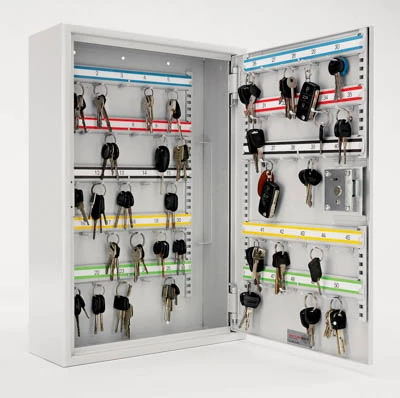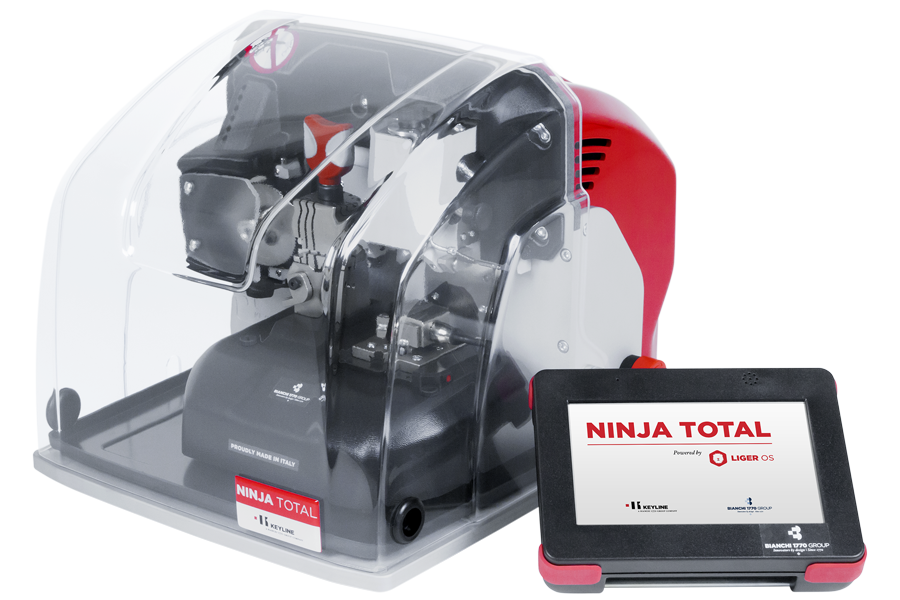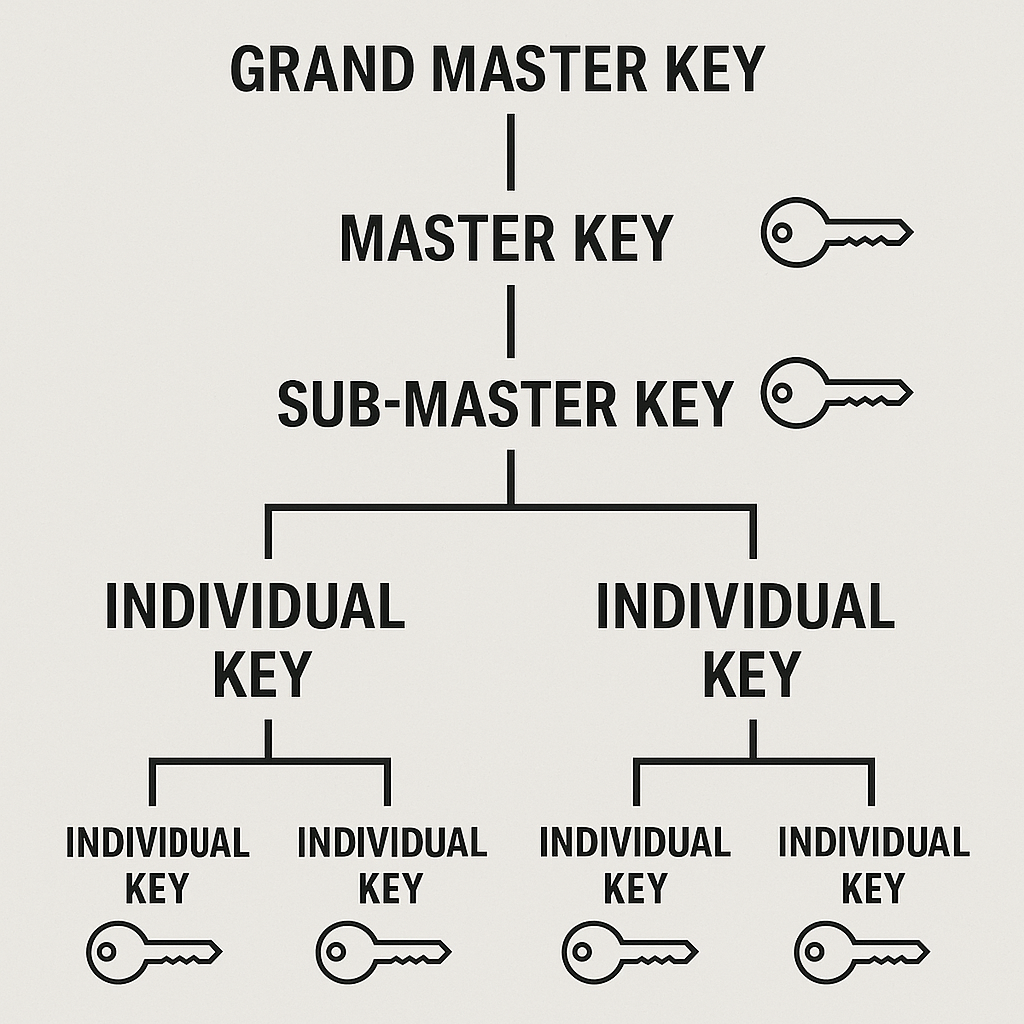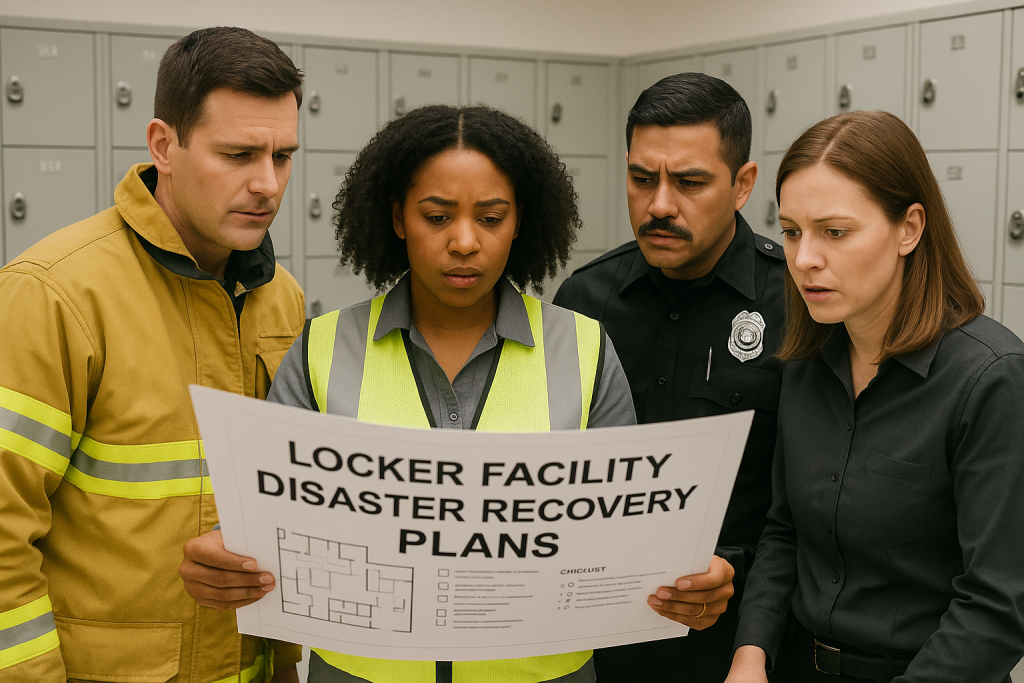Emergency Locker Key Solutions Guide
November 12, 2025

The Complete Guide to Emergency Locker Key Solutions: Managing Lost Keys, Master Key Systems, and Disaster Recovery for Facilities
Every facility manager knows the sinking feeling. Moreover, a staff member reports multiple locker keys missing. Subsequently, you face potential security breaches, operational disruptions, and frustrated users. Furthermore, without proper emergency locker key replacement protocols, a simple lost key becomes a crisis.
Fortunately, comprehensive key management solutions exist. Additionally, modern facilities can implement systems that prevent disasters before they occur. Most importantly, when emergencies strike, rapid response protocols ensure minimal disruption.
This guide explores proven strategies for managing locker key emergencies. Furthermore, we’ll examine master key systems, disaster recovery protocols, and preventive measures. Consequently, your facility will maintain security whilst ensuring smooth operations.

Emergency locker key replacement. The Hidden Costs of Poor Locker Key Management
Financial Impact of Lost Keys
Lost locker keys cost UK facilities thousands annually. Specifically, research shows the average facility spends £3,500 yearly on emergency key replacements. Moreover, this figure excludes indirect costs like staff time and user compensation.
Consider a typical scenario. Firstly, a gym member loses their locker key during peak hours. Subsequently, staff spend thirty minutes attempting solutions. Meanwhile, other members wait impatiently. Eventually, maintenance cuts the lock. Consequently, the facility faces replacement costs, labour expenses, and potential membership cancellations.
Furthermore, inadequate key management multiplies these costs. For instance, facilities without proper key tracking systems experience 40% more key-related incidents. Additionally, they spend triple the time resolving each incident.
Security Vulnerabilities and Legal Risks
Security breaches from poor key control create serious liabilities. Moreover, facilities face legal responsibilities under the Data Protection Act 2018. Specifically, organisations must implement appropriate security measures protecting personal belongings.
Recent cases highlight these risks. Notably, a London fitness centre faced £50,000 in damages after inadequate key control enabled theft. Similarly, a school in Manchester received regulatory warnings following key management failures.
Insurance implications compound these concerns. Particularly, many policies require documented key control procedures. Without proper systems, claims may be rejected. Therefore, comprehensive key management becomes essential risk mitigation.
- Unauthorised locker access incidents increased 23% without proper protocols
- Insurance premiums rise 15% following key-related security breaches
- Legal costs average £12,000 per key-related liability claim
- Reputation damage leads to 8% membership loss after publicised incidents
Operational Disruptions and User Satisfaction
Key emergencies disrupt entire facilities. Furthermore, a single lost master key can render dozens of lockers inaccessible. Consequently, users experience frustration whilst staff struggle with temporary solutions.
User satisfaction metrics reveal the impact. Specifically, facilities with poor key management score 35% lower in customer satisfaction surveys. Moreover, complaint volumes triple during key-related incidents. Additionally, social media amplifies negative experiences.
Staff productivity suffers equally. Indeed, employees spend average two hours weekly addressing key issues in poorly managed facilities. Furthermore, this diverts attention from primary responsibilities. Therefore, proper key management directly improves operational efficiency.
Emergency locker key replacement. Building Your Emergency Key Response Protocol
Immediate Response Procedures
Effective emergency response begins with clear procedures. Firstly, establish a decision tree for various scenarios. Subsequently, train all staff on appropriate responses. Most importantly, document every incident for continuous improvement.
Your immediate response checklist should include verification steps. Initially, confirm the user’s identity through multiple methods. Then, check alternative access options before cutting locks. Finally, implement temporary security measures whilst awaiting replacement keys.
Speed matters during emergencies. Therefore, maintain pre-approved suppliers for rapid key replacement. Additionally, establish maximum response times for different scenarios. For instance, changing room emergencies require fifteen-minute responses, whilst storage lockers allow longer timeframes.
Documentation Systems for Key Tracking
Comprehensive documentation prevents repeat emergencies. Moreover, proper records enable pattern identification and preventive measures. Consequently, facilities reduce incident frequency whilst improving response efficiency.
| Documentation Element | Purpose | Update Frequency |
|---|---|---|
| Key Register | Track all keys and assignments | Real-time |
| Incident Log | Record emergency responses | Per incident |
| Audit Trail | Monitor access patterns | Weekly |
| Supplier Database | Emergency contact information | Quarterly |
Digital systems enhance documentation efficiency. Specifically, cloud-based platforms enable real-time updates across multiple locations. Furthermore, automated alerts notify managers of unusual patterns. Additionally, integration with electronic lock systems provides comprehensive oversight.
Staff Training Requirements
Proper training transforms emergency response effectiveness. Initially, conduct comprehensive induction for new staff. Subsequently, provide regular refresher sessions. Most importantly, simulate emergency scenarios quarterly.
Training modules should cover technical and interpersonal skills. Firstly, staff must understand lock mechanisms and key types. Secondly, they need customer service skills for stressed users. Finally, security awareness prevents social engineering attempts.
- Key identification techniques for various manufacturers
- Emergency override procedures for different lock types
- Communication protocols with users and management
- Security verification methods and documentation requirements
- Supplier coordination and expedited ordering processes
Integration with Next-Day Key Cutting Services
Rapid key replacement minimises disruption duration. Therefore, partner with reliable key cutting services offering next-day delivery. Moreover, establish accounts enabling streamlined ordering.
Pre-registration accelerates emergency responses. Specifically, provide your supplier with lock specifications in advance. Subsequently, they can prepare common key types for immediate dispatch. Furthermore, bulk ordering agreements reduce per-key costs during large-scale incidents.
Technology enhances service integration. For instance, online ordering portals enable 24/7 requests. Additionally, tracking systems provide delivery updates. Consequently, facilities can coordinate user expectations accurately.

Emergency locker key replacement. Setting Up Emergency Key Reserves
Strategic key reserves prevent complete lockouts. However, balance security with accessibility. Therefore, implement tiered reserve systems with appropriate controls.
Calculate reserve quantities using historical data. Generally, maintain 5% spare keys for standard lockers. Additionally, keep 10% reserves for high-turnover areas. Furthermore, store complete sets for critical access points.
Secure storage protects reserve keys whilst ensuring accessibility. Specifically, use NCSC-recommended security measures. Moreover, implement dual-control procedures for master key access. Finally, conduct monthly audits verifying reserve integrity.
Emergency locker key replacement. Master Key Systems and Hierarchical Access
When to Implement Master Key Systems
Master key systems suit specific facility types. Particularly, multi-zone facilities benefit from hierarchical access. Furthermore, organisations with varied security requirements need flexible solutions.
Consider implementation when managing over fifty lockers. Additionally, facilities with multiple user groups require master systems. Moreover, regulatory compliance may mandate hierarchical access controls.
Cost-benefit analysis guides decisions. Initially, calculate current key management expenses. Then, project master system implementation costs. Finally, compare long-term operational savings. Typically, facilities recover investments within eighteen months.
Different Levels of Access Control
Hierarchical systems provide granular control. Firstly, grand master keys access entire facilities. Secondly, departmental masters control specific zones. Finally, individual keys restrict single locker access.
Design hierarchies matching organisational structures. For instance, schools might separate staff and student areas. Similarly, gyms could divide member and employee sections. Additionally, healthcare facilities require department-specific access.
| Access Level | Typical Holders | Scope |
|---|---|---|
| Grand Master | Facility Manager | All lockers |
| Zone Master | Department Heads | Specific areas |
| Sub-Master | Supervisors | Team lockers |
| Change Key | Maintenance | Lock cylinders |
| User Key | Individual Users | Single locker |
Balancing Convenience with Security
Master systems create security trade-offs. Indeed, comprehensive access increases breach risks. However, restricted access complicates emergency responses. Therefore, design systems balancing both requirements.
Implement compensating controls for master keys. Specifically, require dual authorisation for grand master use. Additionally, maintain detailed access logs. Furthermore, conduct regular key audits ensuring accountability.
Technology enhances traditional master systems. For example, electronic locks with audit trails provide oversight. Moreover, time-based restrictions limit after-hours access. Consequently, facilities achieve convenience without compromising security.
Sector-Specific Solutions
Educational facilities require unique considerations. Specifically, safeguarding obligations mandate strict access controls. Furthermore, high user turnover necessitates flexible systems. Additionally, budget constraints influence implementation approaches.
Healthcare environments demand stringent security. Particularly, medication storage requires pharmaceutical-grade controls. Moreover, patient belongings need GDPR-compliant protection. Therefore, implement CQC-compliant systems.
Leisure centres face unique challenges. Indeed, wet environments affect lock mechanisms. Additionally, high-volume usage increases wear. Consequently, select corrosion-resistant systems with robust construction.
- Schools: Separate systems for pupils, staff, and visitors
- Hospitals: Department-specific access with emergency overrides
- Gyms: Member zones with staff-only maintenance access
- Offices: Hierarchical systems matching organisational structure
- Hotels: Guest room integration with facility-wide controls

Custom Master Key System Design
Professional design ensures optimal systems. Initially, conduct comprehensive facility assessments. Subsequently, map access requirements against security zones. Finally, develop systems meeting current and future needs.
Consider expansion possibilities during design. Specifically, incorporate growth capacity into initial specifications. Moreover, ensure compatibility with planned facility modifications. Additionally, design for potential regulatory changes.
Partner selection influences system success. Therefore, choose suppliers offering comprehensive services. Particularly, seek providers combining key cutting with system design expertise. Furthermore, ensure ongoing support availability.
Emergency locker key replacement. Technology Integration and Future-Proofing
Transitioning from Traditional to Electronic Systems
Electronic systems offer enhanced security and convenience. Moreover, they eliminate physical key management challenges. Consequently, many facilities consider digital transitions.
Phased implementation minimises disruption. Initially, pilot electronic systems in high-security areas. Subsequently, expand to general use zones. Finally, maintain hybrid capabilities during transition periods.
Cost considerations influence transition timing. Specifically, electronic locks cost 3-5 times traditional alternatives. However, operational savings offset initial investments. Additionally, enhanced security reduces liability expenses.
Hybrid Solutions Combining Physical and Digital Access
Hybrid systems leverage both technologies’ benefits. Particularly, they maintain familiar physical keys whilst adding digital capabilities. Furthermore, graduated transitions reduce user resistance.
Smart locks exemplify hybrid approaches. Specifically, they accept traditional keys and digital credentials. Moreover, facilities can remotely manage access permissions. Consequently, emergency responses improve significantly.
Integration challenges require careful planning. Indeed, compatibility between systems varies considerably. Therefore, select solutions with open architecture. Additionally, ensure adequate technical support throughout implementation.
RFID and Keypad Lock Integration
RFID technology streamlines access management. Furthermore, cards replace multiple physical keys. Additionally, lost credentials are instantly deactivated. Consequently, security improves whilst reducing replacement costs.
Keypad locks suit temporary access needs. Specifically, they enable code-based entry without physical credentials. Moreover, codes change regularly enhancing security. Therefore, consider keypads for visitor or temporary storage.
System selection depends on use cases. For instance, membership facilities benefit from RFID integration. Alternatively, schools might prefer keypad simplicity. Additionally, high-security areas could implement biometric solutions.
- RFID advantages: Contactless operation, rapid access, central management
- Keypad benefits: No credentials required, easy code changes, cost-effective
- Biometric features: Ultimate security, elimination of credential sharing
- Mobile access: Smartphone integration, remote management, user convenience

Emergency Locker Key Replacement. Cost-Benefit Analysis for Different Facility Sizes
Small facilities face different economics than large installations. Indeed, twenty-locker sites rarely justify full electronic systems. However, hybrid solutions might prove viable. Therefore, analyse specific circumstances carefully.
Medium facilities often benefit most from upgrades. Specifically, 50-200 locker installations achieve optimal returns. Moreover, operational savings rapidly offset investments. Additionally, enhanced user experience drives revenue growth.
Large facilities require sophisticated analyses. Particularly, consider phased implementation costs. Furthermore, calculate training and support requirements. Finally, evaluate integration with existing systems.
| Facility Size | Traditional Cost/Year | Electronic Cost/Year | Payback Period |
|---|---|---|---|
| Small (Under 50) | £800 | £600 | 4 years |
| Medium (50-200) | £3,200 | £1,500 | 2 years |
| Large (Over 200) | £12,000 | £4,000 | 1.5 years |
Disaster Recovery and Business Continuity
Preparing for Natural Disasters
Natural disasters destroy key systems instantly. Furthermore, floods corrode lock mechanisms beyond repair. Additionally, fires melt keys and damage cylinders. Therefore, comprehensive preparation proves essential.
Risk assessment identifies vulnerabilities. Initially, evaluate location-specific threats. Subsequently, assess current resilience measures. Finally, develop mitigation strategies addressing identified risks.
Protective measures reduce disaster impact. Specifically, waterproof key storage prevents flood damage. Moreover, fireproof safes protect master keys. Additionally, off-site backups ensure continuity.
Bulk Key Replacement Strategies
Large-scale incidents require systematic responses. Indeed, replacing hundreds of keys demands coordination. Furthermore, maintaining security during replacement challenges facilities. Consequently, predetermined strategies prove invaluable.
Establish replacement priorities before disasters. Firstly, identify critical access points requiring immediate attention. Secondly, categorise remaining lockers by importance. Finally, develop phased replacement schedules.
Supplier relationships facilitate rapid response. Therefore, maintain agreements with multiple key cutting services. Additionally, pre-negotiate bulk pricing structures. Furthermore, establish priority service arrangements.
- Phase 1: Emergency exits and safety equipment (immediate)
- Phase 2: Staff areas and operational zones (24 hours)
- Phase 3: High-value storage areas (48 hours)
- Phase 4: General user lockers (72 hours)
- Phase 5: Auxiliary storage (one week)
Working with Insurance Companies
Insurance coordination accelerates recovery. However, proper documentation determines claim success. Therefore, maintain comprehensive records before incidents occur.
Document systems thoroughly for insurance purposes. Specifically, photograph all lock installations. Moreover, maintain detailed key registers. Additionally, record system specifications and supplier details.
Claims procedures require specific information. Initially, notify insurers immediately following incidents. Subsequently, provide detailed damage assessments. Finally, submit replacement quotations from approved suppliers.
Policy understanding prevents claim rejections. Particularly, review coverage limits regularly. Furthermore, understand exclusions and requirements. Additionally, ensure compliance with ABI guidelines.

Rapid Response Capabilities
Speed determines recovery success. Moreover, delayed responses compound damages. Therefore, develop rapid mobilisation capabilities.
Emergency response teams require clear responsibilities. Specifically, designate key management coordinators. Additionally, establish communication protocols. Furthermore, conduct regular emergency drills.
Technology accelerates response coordination. For instance, cloud-based systems enable remote management. Moreover, mobile applications facilitate field updates. Consequently, managers maintain real-time situational awareness.
Creating Redundant Key Storage Systems
Redundancy ensures continuity despite disasters. Furthermore, distributed storage prevents complete losses. Additionally, multiple backup locations reduce recovery time.
Design redundant systems with security paramount. Initially, identify secure off-site locations. Subsequently, implement controlled access procedures. Finally, maintain synchronised key registers across sites.
Regular testing validates redundancy effectiveness. Specifically, conduct quarterly backup audits. Moreover, simulate primary system failures. Additionally, measure recovery timeframes against targets.
Implementation Best Practices
Stakeholder Engagement and Buy-In
Successful implementation requires stakeholder support. Indeed, resistance undermines even excellent systems. Therefore, engage stakeholders throughout planning processes.
Communication strategies vary by audience. For instance, emphasise security benefits to management. Alternatively, highlight convenience improvements for users. Additionally, stress efficiency gains for operational staff.
Address concerns proactively preventing resistance. Specifically, acknowledge implementation challenges honestly. Moreover, provide clear transition timelines. Furthermore, offer comprehensive training and support.
Pilot Programmes and Phased Rollouts
Pilot programmes identify issues before full implementation. Additionally, they build confidence through demonstrated success. Consequently, organisation-wide adoption encounters less resistance.
Select pilot areas strategically. Preferably, choose motivated departments with technical capability. Moreover, ensure representative usage patterns. Finally, maintain close monitoring throughout trials.
Learn from pilot experiences systematically. Specifically, gather quantitative performance metrics. Additionally, collect qualitative user feedback. Furthermore, document lessons learned for broader application.
Monitoring and Continuous Improvement
System performance requires ongoing monitoring. Furthermore, usage patterns evolve over time. Therefore, implement comprehensive monitoring frameworks.
Key performance indicators guide improvements. For example, track average response times. Additionally, monitor key loss frequencies. Moreover, measure user satisfaction scores.
Regular reviews identify enhancement opportunities. Specifically, conduct quarterly system assessments. Subsequently, implement identified improvements. Finally, measure impact against baseline metrics.
- Monthly: Review incident logs and response times
- Quarterly: Assess system performance and user feedback
- Bi-annually: Evaluate security effectiveness and compliance
- Annually: Conduct comprehensive system audits
Supplier Selection and Management
Evaluating Key Cutting Services
Supplier selection impacts emergency response effectiveness. Moreover, reliable partners ensure business continuity. Therefore, evaluate providers comprehensively before commitment.
Technical capabilities determine service quality. Specifically, assess key cutting precision and range. Additionally, verify material quality standards. Furthermore, confirm compatibility with your lock systems.
Service levels affect operational efficiency. Particularly important are response times and delivery options. Moreover, consider customer support availability. Additionally, evaluate online ordering capabilities.
Building Strategic Partnerships
Strategic partnerships exceed transactional relationships. Indeed, partners invest in mutual success. Consequently, they provide enhanced support during emergencies.
Develop partnerships through consistent engagement. Initially, maintain regular communication beyond orders. Subsequently, share feedback for service improvements. Finally, explore collaborative solutions for challenges.
Partnership benefits extend beyond emergencies. For instance, partners offer preferential pricing. Additionally, they provide technical expertise. Furthermore, they prioritise your requirements during peak periods.
Conclusion: Building Resilient Key Management Systems
Comprehensive emergency locker key solutions protect facilities from disruption. Moreover, proper planning prevents minor incidents becoming major crises. Furthermore, systematic approaches reduce costs whilst enhancing security.
Implementation requires commitment and resources. However, benefits far exceed investments. Specifically, reduced emergency costs, improved security, and enhanced user satisfaction justify expenditure.
Start improving your key management today. Initially, assess current vulnerabilities using this guide. Subsequently, develop improvement plans addressing identified gaps. Finally, partner with reliable suppliers, ensuring rapid emergency response.
Total Locker Service provides comprehensive key solutions nationwide. Furthermore, our same-day cutting service ensures minimal disruption. Additionally, we offer expert consultation for system design.
Take Action Today
Don’t wait for emergencies to expose vulnerabilities. Contact Total Locker Service on 01284 749211 for expert guidance. Moreover, explore our comprehensive range of locker key solutions. Finally, implement robust systems protecting your facility and users.
Visit our website to discover how professional key management transforms facility operations. Additionally, download our emergency response templates. Most importantly, ensure your facility never faces key-related crises again.
Discover more from Blog Total Locker Service
Subscribe to get the latest posts sent to your email.